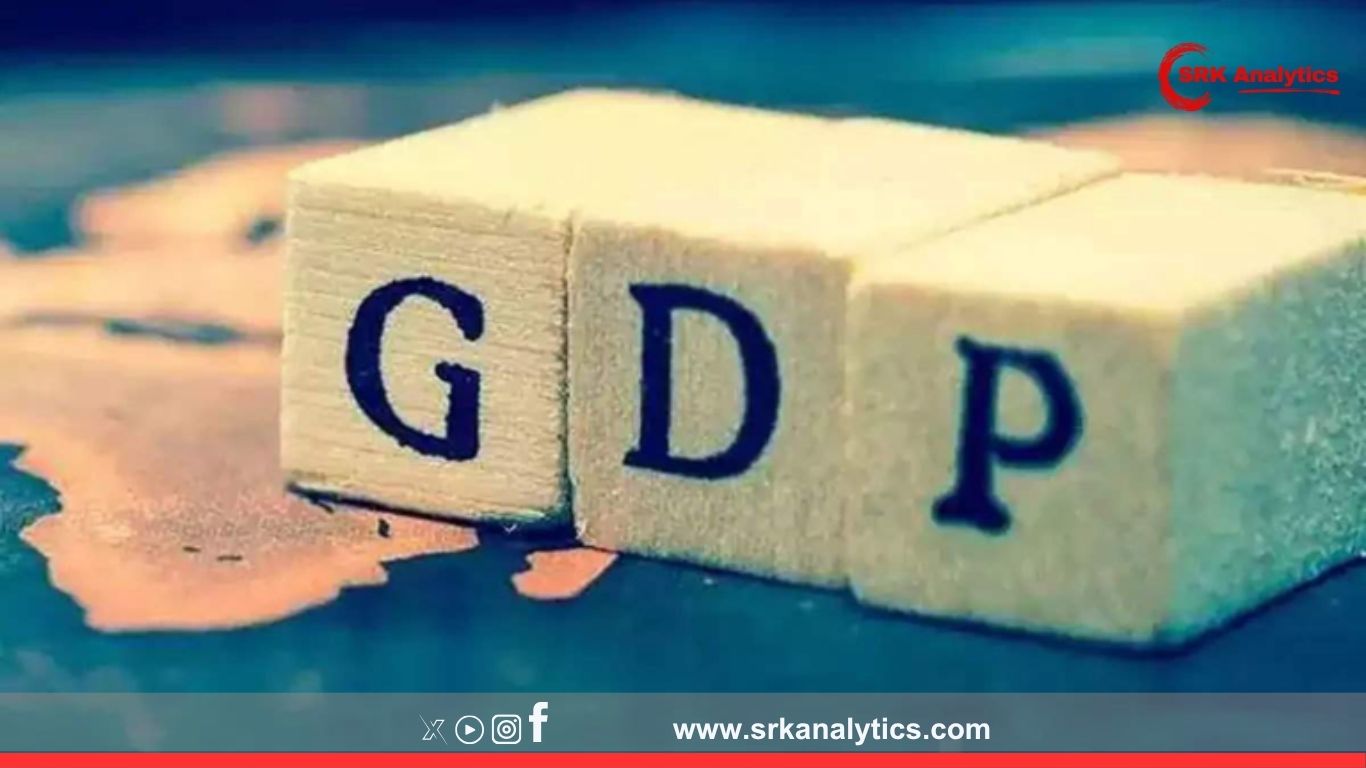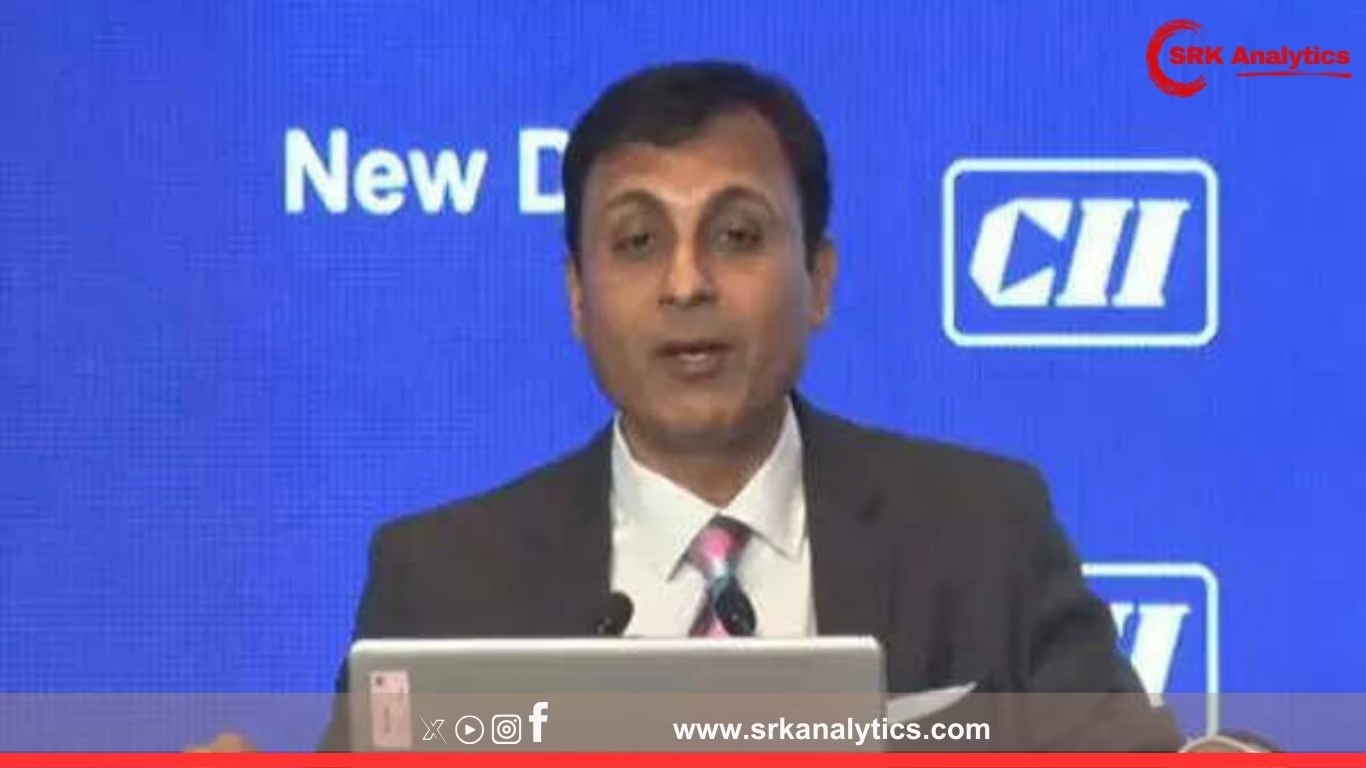India’s economic trajectory for FY26 could see a marked slowdown, with nominal GDP growth likely falling to a six-year low, according to global brokerage Jefferies. This deceleration is expected to impact corporate earnings, with sectors highly reliant on inflation-linked revenue growth facing particular pressure.
Key highlights from Jefferies’ FY26 outlook
In its recent India macro and corporate strategy note, Jefferies projected:
- Nominal GDP growth could slip below 9% in FY26, a stark drop from double-digit growth in recent years
- This would mark the slowest nominal expansion since FY20, prior to the pandemic
- The slowdown is attributed to declining inflation rates, base normalisation, and moderate real GDP growth expectations
Why is nominal GDP growth slowing?
Nominal GDP combines real economic growth with the GDP deflator (reflecting inflation). The report flagged multiple reasons for this projected deceleration:
- Softening inflation trends: With CPI and WPI inflation moderating due to high base effect, commodity cycle reversal, and tight monetary policies, GDP deflator growth is expected to remain low.
- High base impact: FY24 and FY25 recorded robust nominal growth due to post-pandemic recovery and commodity price spikes, making the FY26 base challenging.
- Moderate real GDP growth: Jefferies estimates real GDP growth of 6.5-7% in FY26, aligned with consensus but insufficient to offset the deflator slowdown.
Comparative nominal GDP growth trend
| Fiscal Year | Nominal GDP Growth (%) | Key Drivers |
|---|---|---|
| FY20 | 7.9 | Pre-pandemic slowdown |
| FY21 | -3.0 | Pandemic contraction |
| FY22 | 18.4 | Post-pandemic recovery surge |
| FY23 | 11.2 | Base normalisation |
| FY24 | 10.5 | Commodity-linked inflation |
| FY25 (Est.) | 9.5 | Moderating inflation, stable growth |
| FY26 (Jefferies Est.) | <9.0 | Soft inflation, moderate real growth |
Corporate earnings likely to lag nominal GDP
The brokerage cautioned that corporate earnings growth tends to mirror nominal GDP trends with a lag. With FY26 nominal expansion forecast to dip, earnings expectations could face downward revisions.
“Listed corporate earnings growth is highly correlated with nominal GDP growth. Historically, a fall in nominal growth tends to compress revenue growth, margins, and operating leverage, especially in commodity, infra, and cyclical sectors,” Jefferies noted.
Sectors expected to be impacted
- Oil & Gas: Lower crude prices and inflation will moderate realisations despite stable volumes.
- Metals: Global metal price correction and flat demand growth will impact topline growth.
- FMCG: Price growth will soften due to low inflation, and rural demand recovery remains uneven.
- Cement & Infra: Realisation growth may moderate, while cost pressures stabilise margins.
- Banking: Credit growth is expected to remain healthy, but low inflation may compress nominal growth of advances.
Sectors likely to remain resilient
Jefferies, however, maintained a positive outlook on:
- IT Services: Driven by structural digitalisation demand and currency stability.
- Healthcare: Non-inflation-linked demand with moderate input cost benefits.
- Utilities & Energy Transition: Policy-driven CAPEX and renewables growth to remain robust.
Implications for fiscal deficit targets
Lower nominal GDP growth can impact fiscal arithmetic as fiscal deficit is expressed as a percentage of nominal GDP. Analysts warned:
- FY26 fiscal deficit target may require tighter spending controls to maintain deficit glide path.
- Tax buoyancy could moderate, requiring enhanced tax administration or strategic disinvestment to protect revenue.
- The Centre’s efforts to maintain a fiscal deficit of 4.5% of GDP by FY26 could become challenging if nominal growth undershoots projections.
Market implications of Jefferies’ outlook
The Nifty and Sensex have already priced in FY25 earnings growth with limited upgrades expected. However, if FY26 earnings growth decelerates due to low nominal GDP, market valuations may witness adjustments:
| Metric | FY25 (Consensus) | FY26 (Jefferies Outlook) |
|---|---|---|
| Nifty EPS Growth (%) | 14 | 10-11 |
| Sensex EPS Growth (%) | 12 | 9-10 |
| Nominal GDP Growth (%) | 9.5 | <9.0 |
Jefferies advised investors to focus on quality compounders, select financials, and IT services, while exercising caution in commodity-exposed stocks in FY26.
RBI policy outlook in context
The Reserve Bank of India has maintained a tight policy stance to contain inflation despite global growth risks. Jefferies’ macro team expects:
- 25-50 bps rate cut possibility in late FY25 or FY26 if inflation remains within target and global conditions warrant monetary easing.
- Real policy rates will remain positive, supporting rupee stability but moderating credit-led nominal growth.
Global comparisons: India remains a bright spot despite slowdown
Despite this projected deceleration, India’s nominal GDP growth remains higher than most major economies:
| Country | FY26 Nominal GDP Growth (Est.) |
|---|---|
| China | 5-6% |
| US | 4-5% |
| Eurozone | 3-4% |
| Japan | 2-3% |
| India | ~9% |
Jefferies reiterated India’s structural advantages of demographic dividend, formalisation, and policy reforms will continue to drive long-term growth, even if short-term nominal expansion moderates.
Government’s view
Finance ministry officials have maintained that nominal GDP moderation is a function of successful inflation control, which benefits consumption and investment sentiment in the medium term. The Union Budget for FY26 is expected to balance fiscal prudence with targeted growth impulses through:
- Infrastructure capex allocation continuation
- Tax policy stability
- Production-linked incentives to sustain manufacturing and exports growth
- Job creation schemes for youth employability
Conclusion
Jefferies’ forecast of India’s nominal GDP falling to a six-year low in FY26 with lagging corporate earnings signals the economy’s transition into a mature, lower inflation, structurally stable growth phase. While market participants may recalibrate near-term earnings expectations, India’s medium- and long-term growth story remains intact, anchored by consumption, digitalisation, and strategic policy interventions.
Disclaimer: This article is for informational purposes only. Readers are advised to consult official financial reports, brokerage research notes, and government publications before making any business, policy, or investment decisions based on this news analysis.











